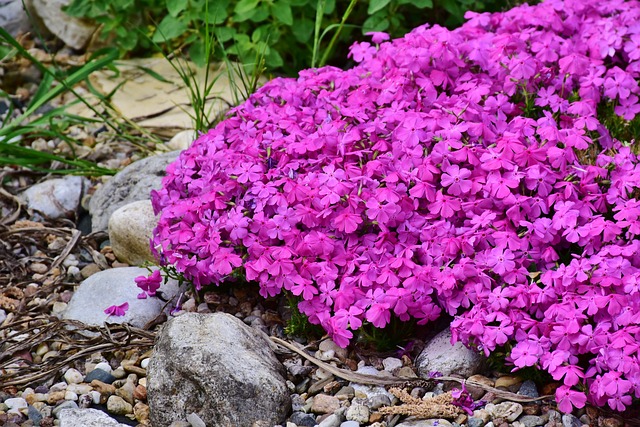Ground covers don’t require too much patience the roots grow extremely fast once anchored and in hardly any time at all you will be amazed by the flower or leaf carpet in your garden. Ground covers are stalwarts in the garden that are ridiculously easy to grow even if you are still developing your green fingers. What’s more, you can choose from a wide variety: plants with colorful flowers, lovely foliage and interesting textures. They are widely seen as the final touch in a garden and are used as beautiful borders for beds and to soften hard lines in the garden. Once your garden soil is completely covered you can plant lush flowering ground covers such as verbenas and runner pelargoniums in pots and hanging baskets. Why ground covers?
They grow everywhere
If you are struggling with a problem area in your garden, you are bound to find a ground cover that will conceal that eyesore:
Under the trees:
Peace-in-the-home (Soleirolia soleirolii), which likes damp areas, and Australian violets (Viola hederacea)
Between stepping stones:
flat-growing daisy lawn (Phyla nodiflora) and pennyroyal (Mentha pulegium)
.On slopes: indigenous ground covers such as Plectranthus neochilus, sour fig (Carpobrotus edulis) and trailing gazania (Gazania rigens). They have strong root systems that get a good grip and provide a feast of colour in spring and summer. What’s more, they grow so easily that it’s possible to stick a row of rootless cuttings into the soil. Water them regularly until you notice new growth then you can forget about the hose for long periods of time
. Brackish and poor soil, and coastal conditions: ice plants (Aptenia cordifolia) and silver lawn (Dymondia margaretae)
. In retaining walls, rock clefts and cement cracks: star flowers (Erigeron karvinskianus) and creeping marguerites (Osteospermum fruticosum). They don’t ask for much Easy on your wallet: Ground covers in plant bags of 2kg or 4kg are generally much cheaper than small shrubs. Many of the more popular varieties, such as treasure flowers, calendulas, carpet bugle (Ajuga reptans) and snow in summer (Cerastium tomentosum) are also sold in seedling trays of six, while those that are to take the place of lawns are available in seedling trays containing 100 or 200 plants. Wonderlawn (Dichondra repens) is an old favourite for this purpose
.Easy to grow: It’s easy to divide and multiply ground covers. Some varieties, such as moss verbena, do the job for you. Roots appear where the nodes on runner stems touch the soil. The rooted parts can be cut off with a spade and planted elsewhere. Tufted plants that become too dense, such as wild garlic (Tulbaghia), can be divided safely.В В
Easy work: Where dense ground covers flourish, germinating weeds don’t easily get an innings. These growing mulches also keep the roots of other plants cool. Use ground covers in shrub beds, the rose garden as well as shady gardens to reduce the amount of work you need to put in. Growing tips. If you neglect the ground covers in your garden you will come to regret it. Even though some are as tough as nails they, like most other plants, require good soil preparation and regular watering, feeding and pruning.
First the soil… Work in quite a few loads of compost and a handful of bone meal the latter ensures strong roots Feeding Feed the plants in spring, late summer and for the last time in autumn with slow-release fertiliser such as 3:1:5 SR or an organic equivalent. Also water them regularly. Outsmart the weeds Use weed matting when you are planning to cover a large piece of garden soil with ground covers.
First cultivate the soil, then lay the weed matting and secure it with ‘hairpins’ made of galvanised iron. Use a pair of scissors to cut planting holes in the matting and then plant the plants in them. Pruning Sheep shears come in handy when you want untidy ground covers to look attractive again. Don’t feel sorry for the plants; prune them back sharply after a good flowering phase. If bare patches appear in your garden carpet you can remove the dead pieces, loosen the soil slightly and fill the holes with fine compost. Particularly flat-growing ground covers such as Corsican mint (Mentha requinii) tend to deteriorate after a while and die in places, usually due to lack of water or sudden heat. Use a bulb planter to make neat holes among the old plants and then add young plants to the carpet. That silver lining…
Flat growers with silver or grey foliage give a cool appearance and provide interesting variation among other plants that produce brightly colored flowers. If the grey becomes too much, you can always brighten it up with the new Calendula varieties. They have greyish to olive-green foliage and produce bright-yellow flowers in winter and spring.

